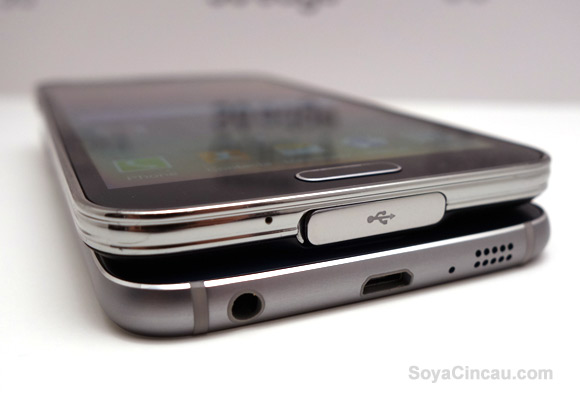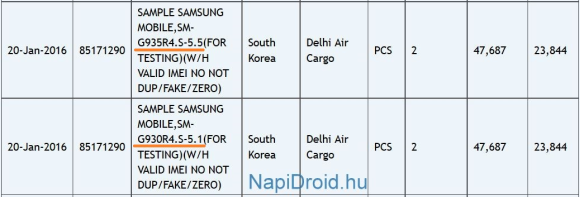It’s been a trying couple of weeks as the brains behind the tech journalism world attempted to figure out what exactly were the specifications for the upcoming Samsung Galaxy S7. Some said there could be as many as four models launched at the same time while others dismissed that right out of the bat. There was never any official confirmation beyond an entry in the Indonesian certification agency (which has been removed) and an exclusive by SamMobile.
Now, though, thanks to Indian import-export tracker Zauba, we at least have confirmation of the Galaxy S7 and S7 edge’s screen sizes.
Based on this listing, the two devices bearing the model number SM-G930R4 and SM-G935R4 — which is the Galaxy S7 and S7 edge respectively — have been listed to pack a 5.1-inch screen for the S7 and a 5.5-inch screen for the S7 edge. This reflects the earlier specifications outed by popular benchmark AnTuTu. Plus, since only two models have been imported, it is becoming less and less likely that Samsung will launch four devices at the same time. Then again, smartphone manufacturers have done crazier things. Though, it is worth noting that only two of each device have been imported, probably because they’re tester units (as can be seen in the description “FOR TESTNG”).
Based on most leaks, the Galaxy S7 and S7 edge should come with a Quad HD display packing either an Exynos 8890 processor or a Snapdragon 820 processor (likely depending on region) plus 4GB of RAM and either 32GB, 64GB, or 128GB of expandable internal storage. Yes, there will be a microSD card slot. The camera will probably be a 12-megapixel BRITECELL rear-facing camera and a 5MP front-facing selfie cam. These devices should also have support for Cat.12/13 LTE connectivity and a USB Type-C port. They should also come running Android 6.0 Marshmallow out of the box.
If you’d like to catch up on what we know about the new Galaxy S lineup, you can find more info here and here. We will definitely know more once Samsung’s Unpacked event in Barcelona which will take place in February. Until then, these specifications could change — though we think unlikely because they match up with our earlier report on the Indonesian certification agency — so don’t follow them blindly.
[SOURCE]








